Nestled within the captivating landscapes of the Kii Peninsula in Japan lies a network of ancient pilgrimage routes known as the Kumano Kodo. These sacred paths, rich in history and spirituality, lead to the revered Kumano Sanzan shrines, offering modern travellers an opportunity to connect with nature, culture, and their own inner journey. Join us on a virtual exploration of the Kumano Kodo and its remarkable features.
A Quick Primer to Kumano Kodo
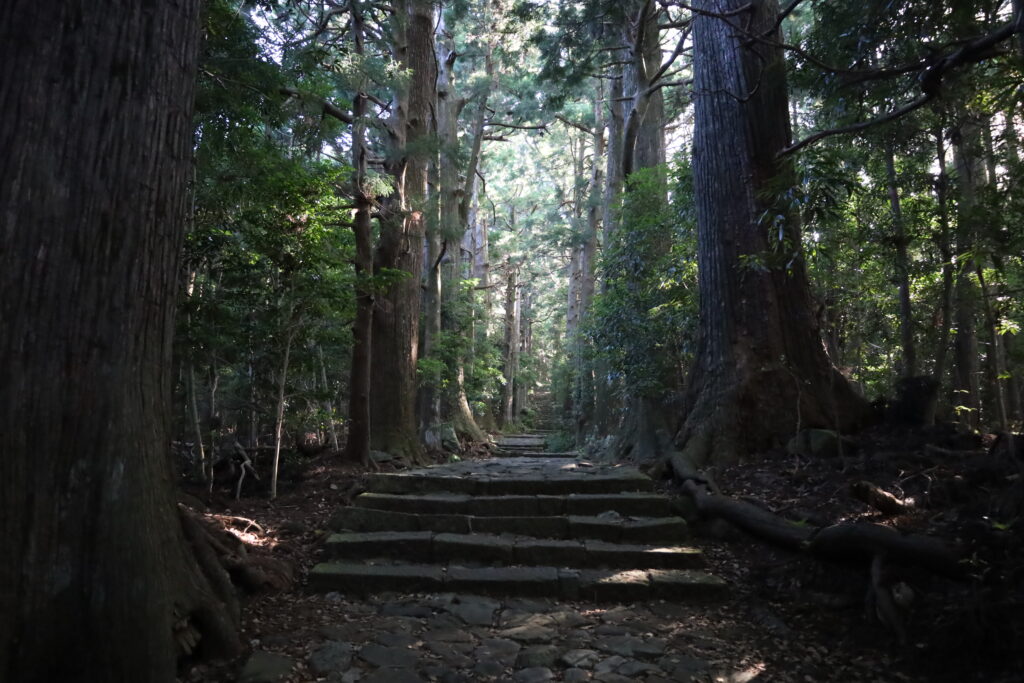
The Kumano Kodo is not just a physical journey; it’s a pilgrimage of the heart and soul. For over a millennium, these trails have been traversed by pilgrims, forging a deep connection to Japan’s cultural heritage. Each step along the Kumano Kodo carries a sense of reverence, as travellers follow in the footsteps of those who sought spiritual enlightenment and solace.
The Kumano Kodo: A Spiritual Odyssey
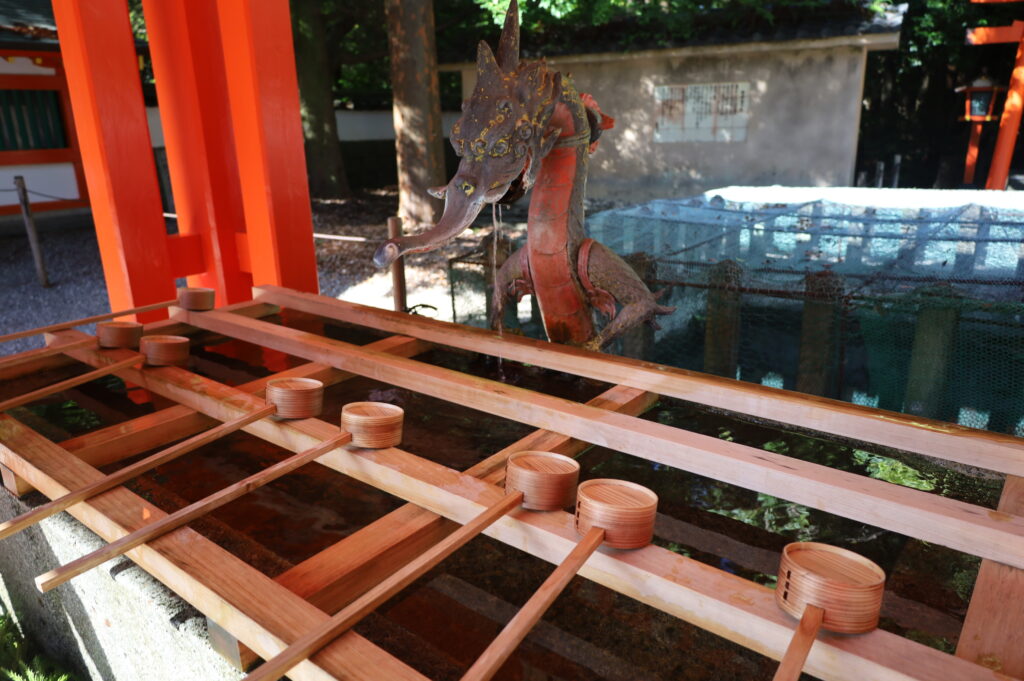
The Kumano Kodo is a spiritual odyssey that transcends time. These paths are steeped in history, dating back to the days when emperors and ascetics embarked on journeys of self-discovery. Today, they continue to inspire seekers from around the world to explore the interplay between nature and the human spirit.
Oji Shrines: Resting Places of Reflection

One of the distinctive features of the Kumano Kodo is the presence of Oji Shrines – small sanctuaries thoughtfully placed along the trails. These shrines served as places of rest and reflection for pilgrims, offering them a chance to gather their thoughts, connect with the natural surroundings, and find solace on their spiritual journey.
The Kumano Sanzan Shrines: Spiritual Nexus

The pinnacle of the Kumano Kodo journey is the Kumano Sanzan, a trio of sacred shrines – Kumano Hongu Taisha, Kumano Hayatama Taisha, and Kumano Nachi Taisha. These shrines hold deep spiritual significance and are also revered for their natural beauty. From the iconic Torii gate of Oyunohara to the enchanting Nachi Falls, each shrine offers a unique blend of cultural heritage and breathtaking scenery.
The Kumano Kodo Routes: A Detailed Journey

The Kumano Kodo encompasses several routes, each with its own unique character and experiences:
- Nakahechi Route: This is perhaps the most well-known and traversed route of the Kumano Kodo. It begins in Tanabe and leads to the Kumano Hongu Taisha shrine. Along the way, hikers will pass through picturesque villages, lush forests, and terraced rice fields. Expect to encounter sacred shrines, Oji shrines, and tranquil waterfalls.
- Kohechi Route: Starting from the ancient capital of Kyoto, the Kohechi Route is a challenging and less-travelled option. It offers breathtaking mountain views, serene forest paths, and encounters with local communities. This route culminates at the Kumano Hongu Taisha shrine.
- Iseji Route: The Iseji Route connects the Kumano Kodo with the Ise Grand Shrine, another significant pilgrimage destination. Travellers will traverse coastal landscapes, visit small fishing villages, and immerse themselves in both Shinto and Buddhist traditions.
Serene Waterways: Kumano-gawa Funakudari

The Kumano-gawa Funakudari, a traditional boat ride along the Kumano River, allows travellers to immerse themselves in nature’s beauty.
Different areas along the Kumano River offer scenic boat tours that allow you to enjoy the natural beauty of the surroundings. These tours will take you through picturesque landscapes, offering views of lush greenery, traditional architecture, and possibly historical landmarks.
Some boat rides include cultural elements, such as performances, storytelling, or explanations of the local history and traditions. This adds a cultural dimension to the experience, providing insights into the rich heritage of the Kumano Kodo region.
The Kumano Kodo is a network of ancient pilgrimage trails, and this boat ride is designed to give you access to key pilgrimage sites along the river. This can be a unique way to explore the region and its religious and historical significance.
As you gently glide downstream, you become part of the same waters that have been navigated by pilgrims for generations. The experience offers a unique perspective on the landscapes and their profound spiritual connection.
Nachi Falls and Nachisan Seiganto-ji Temple: Where Nature Meets Spirituality
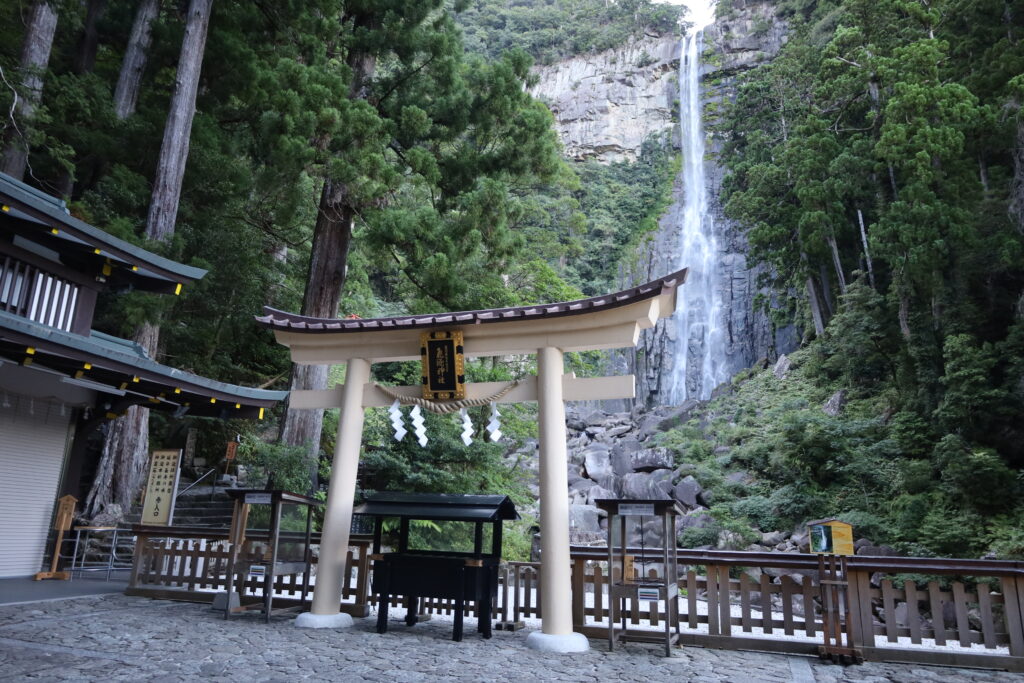
Nachi Falls is a testament to the magnificence of nature, plunging dramatically and inspiring awe. Adjacent to it stands Nachisan Seiganto-ji Temple, its vermilion pagoda creating an ethereal vista against the backdrop of the falls. Together, they exemplify the harmonious relationship between the sacred and the natural, inviting travellers to contemplate the beauty and spirituality that define the Kumano region.
Sunrise Kayaking: Embracing Nature’s Beauty
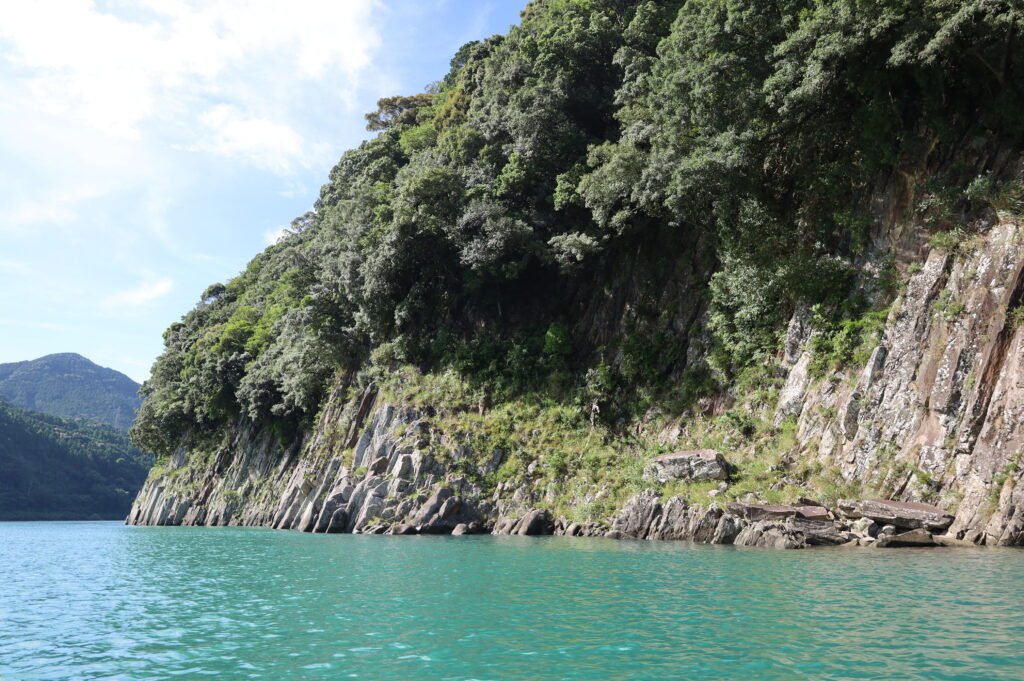
Embrace the serenity of Kumano Kodo with a sunrise kayaking experience at Beach House La Lapin. Witness the break of dawn from the tranquillity of the water as the first rays of sunlight touch the sea’s surface. It’s a meditative journey that connects you with the environment and its simple joys, offering a unique way to experience the Kumano region’s natural beauty.
Tuna Auction Tour: A Glimpse into Seafood Commerce
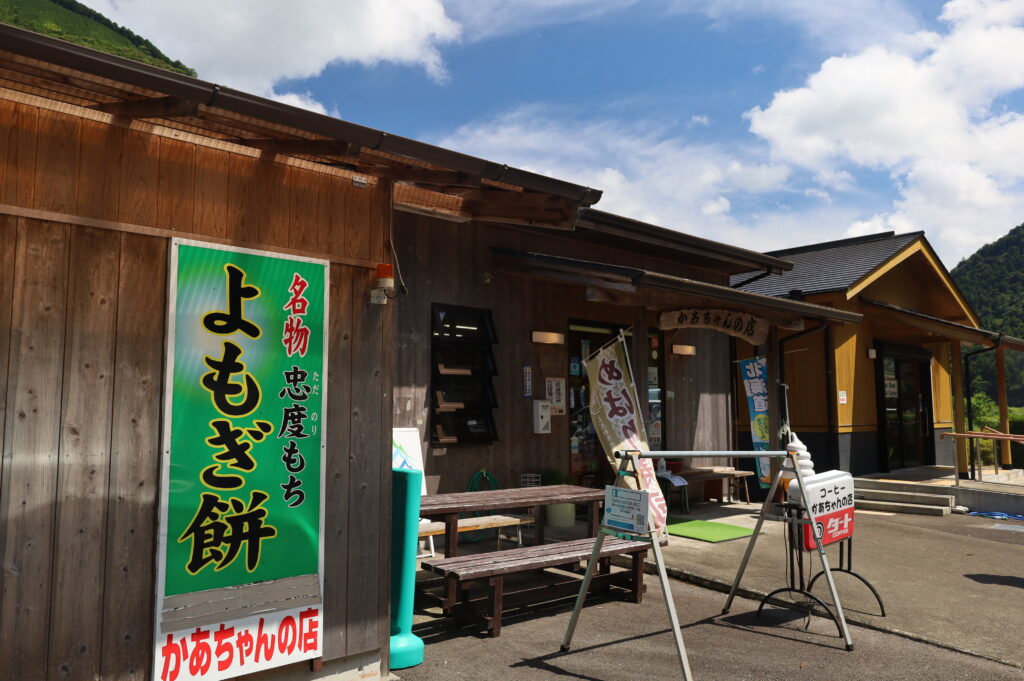
The Tuna Auction Tour at Katsuura Regional Wholesale Market or Nigiwai Market unveils the vibrant world of seafood trade in Japan. Witness the fast-paced tuna auctions and experience the energetic atmosphere, providing a unique perspective on the dedication and craftsmanship behind Japan’s culinary heritage.
Sample Kumano Kodo Itinerary
Day 1: Arrival and Introduction to Kumano Kodo
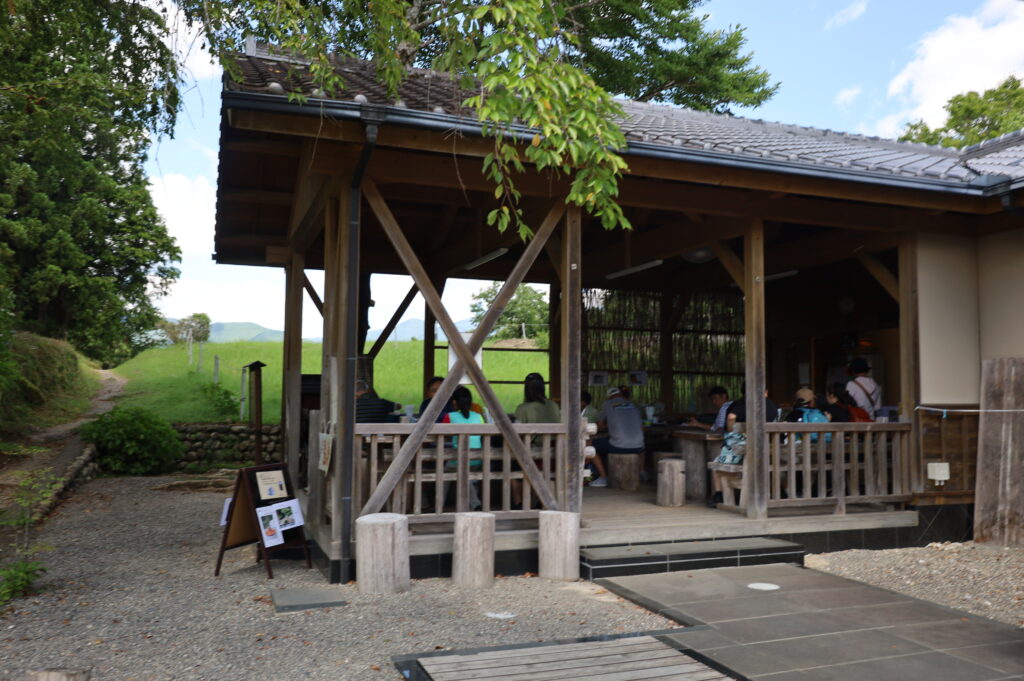
Morning: Arrival in Kii-Tanabe
- Arrive at Kii-Tanabe, the gateway to the Kumano Kodo.
- Check into your accommodation and take some time to rest and refresh.
Afternoon: Kumano Kodo Visitor Center
- Visit the Kumano Kodo Visitor Center to learn about the history, significance, and different pilgrimage routes.
- Gather information and maps for the upcoming journey.
Evening: Welcome Dinner
- Enjoy a traditional Japanese dinner at your accommodation.
- Use the evening to prepare for the next day’s adventure.
Day 2: Beginning the Pilgrimage – From Hosshinmon-oji to Fushiogami-oji

Morning: Hosshinmon-oji to Fushiogami-oji
- Start your journey at Hosshinmon-oji, the Gate of Determination.
- Trek through picturesque landscapes, passing through forests and serene paths.
- Reach Fushiogami-oji, an Oji Shrine where pilgrims traditionally paid homage.
- Reflect on the history and spirituality of the place.
Afternoon: Cultural Immersion
- Enjoy a local lunch in a nearby village.
- Visit a traditional workshop to learn about local crafts or activities.
Evening: Arrival at Katsuura
- Arrive at Katsuura, your destination for the day.
- Check into your accommodation and unwind.
- Take a leisurely stroll around the town to soak in the local ambiance.
Day 3: Enchantment of Kumano Sanzan – Kumano Hongu Taisha

Morning: Kumano Hongu Taisha
- Depart for the highlight of your journey, Kumano Hongu Taisha.
- Explore the grand shrine and its surroundings, including the iconic Torii gate of Oyunohara.
- Take time to meditate and appreciate the spiritual aura of the place.
Afternoon: Kumano-gawa Funakudari
- Embark on the Kumano-gawa Funakudari, a boat ride on the Kumano River.
- Glide along the serene waters, surrounded by lush landscapes.
- Enjoy the tranquility and connect with the river’s history.
Evening: Traditional Onsen Experience
- Relax your muscles and rejuvenate in a traditional Japanese onsen (hot spring).
- Dine on a delicious dinner at your accommodation.
Day 4: Kumano Hayatama Taisha and Nachisan Seiganto-ji Temple

Morning: Kumano Hayatama Taisha
- Journey to Kumano Hayatama Taisha, the second of the Kumano Sanzan shrines.
- Explore the shrine’s connection to water and its serene surroundings.
- Learn about the spiritual significance of the Nagi-no-Ki tree.
Afternoon: Nachisan Seiganto-ji Temple and Nachi Falls
- Visit Nachisan Seiganto-ji Temple, framed against the backdrop of Nachi Falls.
- Take in the awe-inspiring sight and capture the beauty of the falls.
- Reflect on the harmony between nature and spirituality.
Evening: Sunset Exploration
- Spend the evening exploring the area around Nachi Falls.
- Capture the beauty of the sunset as it casts a golden glow on the landscape.
Day 5: Culinary and Cultural Delights

Morning: Tuna Auction Tour
- Experience the exhilarating Tuna Auction Tour at Katsuura Regional Wholesale Market or Nigiwai Market.
- Witness the energy of the tuna auctions and gain insights into seafood commerce.
Afternoon: Gastronomic Adventure
- Enjoy a seafood-focused lunch at a local restaurant.
- Explore the local cuisine and savor the flavors of the region.
Evening: Free Time
- Spend your evening at your leisure.
- Take the opportunity to relax, explore, or engage in any activities you missed.
Day 6: Farewell to Kumano Kodo

Morning: Departure
- Check out from your accommodation.
- Depart from Kii-Tanabe with memories of a transformative journey.
Kumano Kodo: A Passage Through Time
Kumano Kodo is not just a physical journey; it’s a passage through time, a bridge between cultures, and an exploration of the connection between spirituality and nature. As you traverse these ancient paths, you’re not merely a traveler but a participant in a legacy that continues to shape the hearts and minds of those who seek its wisdom and wonder. Embark on your Kumano Kodo adventure and discover the profound depths of Japan’s cultural and natural heritage.
Check out more guides and itineraries in our blog.


Recent Comments